The global changes underway include climate disruption, changes in land use, as well as changes in agricultural practices (notably reduced inputs) and biological invasions. These impose new constraints on insect populations, to which species sometimes respond rapidly. The research work carried out within Area 2 aims to analyse and understand the evolutionary trajectories of the species studied (demography, adaptations, history of invasions), the role of associated microbiota in these trajectories, and to test the sustainability of several innovative management methods, such as the sterile insect technique, agroecological solutions (e.g. push-pull repulsion-attraction strategies) and preventive locust control tools. Theoretical or simulation-based approaches are also being developed to provide new tools for analysing genomic diversity or anticipating crises.
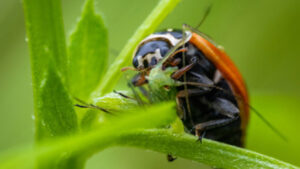 |
One of the challenges of our research is to move from analysing the past to predicting future trajectories. |
Research focuses on insects of interest to agronomy and forestry, both native (moths, processionaries, locusts) and invasive (fruit flies, bark beetles, Asian ladybird beetles). They include both fundamental and highly finalised approaches. They involve complementary disciplines and approaches, such as theoretical or statistical development, population genomics, phenotyping and experimental evolution. They concern both natural populations collected or monitored in the field and experimental populations bred under controlled conditions.
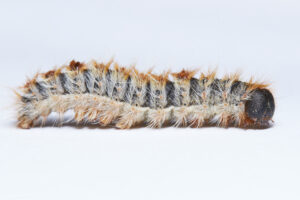
Developing strategies to control and/or manage pest populations requires in-depth knowledge of their evolutionary history. In the current context of a gradual reduction in the use of pesticides, it is vital to: (i) identify the geographical origin of pest populations, which is a prerequisite for characterising natural enemies that can then be used as biological control agents; (ii) reconstruct the routes taken by exotic pest species to identify the historical, demographic and genetic factors responsible for the evolutionary success of these populations; (iii) to understand the mechanisms involved in the adaptation of phytophages to their host plants (e.g. in the corn borer Ostrinia nubilalis), or more generally in the expression of their life history traits (e.g. phenology in the pine processionary Thaumetopoea pityocampa; phase polyphenism in the desert locust Schistocerca gregaria), in order to anticipate possible evolutionary dynamics, particularly in the face of changes in agricultural practices and global change.
Population genetics provides powerful tools for inferring evolutionary history based on the analysis of genetic polymorphism. CBGP has widely recognised skills in this field. We are making the most of our mastery and expertise in the technologies associated with the new generations of high-throughput sequencing and genotyping (both in terms of their implementation in the laboratory and their statistical analysis) to characterise the evolutionary history of pest populations. At the same time, we aim to strengthen our skills in quantitative and evolutionary genetics. The aim is to combine genome analysis with the detailed characterisation of phenotypes, in order to determine the genetic basis of the adaptation of insect pests to their biotic and abiotic environment.
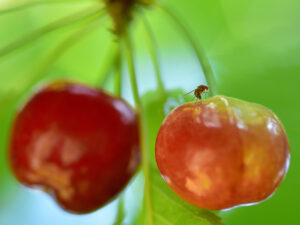
Another area of research in Area 2 aims to gain a better understanding of the contemporary dynamics of pest populations. This involves, for example, measurements of life history traits in controlled environments, which provide indirect information on the demography of a species and the role of ecological factors in demographic changes (e.g. the influence of plant cover on phase polyphenism in locusts). At the same time, the development of innovative spatial genetics methods will make it possible to characterise the dispersal capacities of organisms and the role of spatial heterogeneity in the landscape in the fine structuring of populations (e.g. the effect of the landscape and agricultural practices on the population dynamics of the oriental fruit fly Bactrocera dorsalis). All these indirect inferences (based on both genetic and non-genetic approaches) will make it possible to construct spatially explicit mechanistic models of population dynamics, incorporating the knowledge acquired about the life-history traits of species. In particular, these mechanistic models will make it possible to test in silico the effectiveness of alternative techniques to the use of plant protection products for pest management. One of these techniques, entomovectoring, involves using insects to spread biopesticides in pest populations (e.g. using sterile male oriental fruit flies to spread the entomopathogenic fungus Metarhizium).
In addition to indirectly reconstructing the history of populations or their demography, continuing evolution experiments under controlled conditions in the laboratory will provide a better understanding of the dynamics of adaptation and the importance of the constraints and evolutionary compromises that species face, particularly during biological invasions (e.g. in the Asian ladybird Harmonia axyridis and the spotted wing drosophila Drosophila suzukii). Another context in which the study of these dynamics of rapid evolution takes on its full meaning concerns the assessment of the risks associated with the implementation of genetic forcing techniques (gene drive) for the management of pests. These techniques involve the release of genetically modified organisms designed to propagate a variant of interest (e.g. a mutation that reduces fertility) in natural populations. This emerging method of population control raises a number of scientific and societal questions. We are therefore proposing to develop new research programmes aimed at studying the evolutionary dynamics of these genetic constructs in natural populations, in order to better assess the associated environmental risks (emergence of resistance, spread by gene flow in non-target populations, transfers between species, etc.).
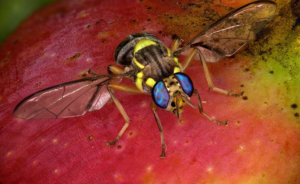
Characterising insect microbial communities and gaining a better understanding of the evolutionary ecology of interactions in multi-trophic systems (microbes–insects–host plants) can contribute to the development of insect pest management strategies by exploiting or manipulating these interactions. For example, a better understanding of the role of the intestinal microbiota of phytophagous insects in adaptation to the host plant would make it possible to propose control strategies by manipulating the microbial communities involved (e.g. in the spotted wing drosophila D. suzukii, the European corn borer O. nubilalis or the pine processionary T. pityocampa). In other contexts, the study of interactions between microbes and their hosts could lead to the development of « natural repellents » made up of microbial cocktails, biological control using viral agents, and control by manipulating the biological functions of the pest itself (linked, for example, to immunity).
Project holder (WP coordination): Charles Perrier
Funding: Fondation Agropolis
This interdisciplinary project combines genetics, ecology and ethnology to better understand the intrinsic, environmental and human factors that have facilitated Carmenta foraseminis recent emergence as a pest insect foraging on cocoa in South America.
Project manager : Cyril Piou
Funding: French Development Agency (AFD) through the United Nations Food and Agriculture Agency (FAO)
The objectives of this project are:
Project manager: Simon Boitard & Raphaël Leblois
Funding: Région Occitanie, Défi Clé Biodivoc
The DevOCGen project aims to develop a new sequencing technology and new statistical methods for estimating the recent and local history of populations based on genomic data.
https://biodivoc.edu.umontpellier.fr/recherche/projets-consortium/projet-de-consortium-devocgen/
Project manager: Marie-Pierre Chapuis
Funding: ANR-PRC
We are developing a landscape genetics approach that takes account of the specific features of agro-ecological and socio-technical systems, in order to provide integrated management stakeholders with in-depth knowledge of crop pest population dynamics (e.g. dispersal processes), information that is essential for designing collective strategies.
https://passion-entomologie.fr/agroecologie-cirad-senegal
Project holder (coordination WP) : Charles Perrier
Funding: Région Occitanie
This interdisciplinary project aims to study the determinants of the local adaptation of an invasive fish species to cocktails of environmental stresses, including aquatic pollution. A working group coordinated at CBGP is using population genomics to study the genomic basis of local adaptation and the demographic history of the expansion and its effects on adaptation and genetic burden.
https://biodivoc.edu.umontpellier.fr/recherche/projets-consortium/projet-de-consortium-gamboc/
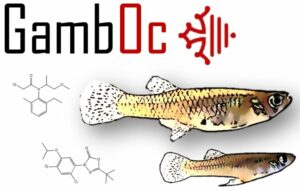
Project managers: Isabelle Masneuf Pomarede (UMR Oenology) & Simon Fellous (co-supervision of Paul Hubner’s PhD)
Funding: Meta-programme Holoflux et Région Occitanie
With the rise of so-called ‘natural’ wines, it has become essential to identify the processes governing spontaneous fermentation. This fermentation depends on the micro-organisms present on and in the fruit. It is therefore essential to uncover the origins of the vine microbiota, the flows between the winery and the vineyard, and the role of insects in these processes, a role that is often put forward but never fully understood.
We will quantify, in the field, the processes of colonisation of the grape berry. The hypotheses identified will be tested experimentally, in a mesocosm and in the vineyard, using experiments involving the vection of target microorganisms by Drosophila flies. This work will be based on an analysis of the effects of the composition of the microbiota on wine quality in order to focus investigations on the species that determine it.
This dual approach to ecology and oenology will provide the unique knowledge needed for agro-ecological management and the controlled production of natural wines.
Project managers: Carole Kerdelhué and Jean-Pierre Rossi
Funding: DGAL
Xylotrechus chinensis is a capricorn beetle that is invasive in Europe, and has been detected in France since 2018. It attacks the various species of mulberry (Morus sp.) widely planted in towns and villages. The aims of this project are to identify the sources of the European populations, to estimate its potential short- and medium-term distribution area, and to test its ability to develop on vines, apples and pears, which have been cited as potential hosts in the literature.
Project manager: Marie-Pierre Chapuis
Funding: ANSES
We are developing innovative molecular tools that are as simple, rapid and cost-effective as possible, in order to provide those involved in monitoring fruit flies in Europe with an operational framework that will enable them to ensure the correct identification of the species and to provide information on the geographical origin of invasive individuals, knowledge of which is necessary in order to direct the control effort towards the pathways and entry points.
Project manager: Charles Perrier
Funding: ANR
Using population genomics and phenotypic analyses, the LOADEXP project measures the accumulation and purging of the burden of deleterious mutations during the spatial expansion of an invasive species. The biological model used is an expanding forest insect pest, the pine processionary. This project is funded mainly by the ANR and INRAE.
Poject manager: Cyril Piou
Funding: ANR-JCJC
The objective of PEPPER is to explore the trade-offs and environmental conditions leading to phase polyphenism emergence. We developed forecasting model of locust population dynamics and theoretical studies on the regimes of environmental variation of resources favorable to phase polyphenism evolution.

Project managers: Carole Kerdelhué and C. Robinet (URZF, INRAE Orléans-Val de Loire)
Funding: ANR
The main aim of the project is to determine how phenology affects the spatial distribution of species and how this distribution changes in a changing climate. The project targets the pine processionary caterpillar as a biological model, and integrates approaches based on field monitoring, experimental ecology, modelling, population genetics and transcriptomics.
Project managers: CTIFL & Simon Fellous
Funding: ECOPHYTO
The cherry plan aims to renew approaches to the management of a pest, Drosophila suzukii, in a context of change and constraints, ultimately leading to integrated management for the cherry sector.
This will be based primarily on regulating pest populations upstream of control measures and using alternatives to synthetic plant protection products. Emphasis is placed on combining methods (physical barriers, control strategies, biocontrol, mass trapping, etc.) and implementing prophylactic and population management measures, such as acclimatising parasitoids or using the sterile insect technique, thus exploring all the levers that can be mobilised to limit the impact of Drosophila suzukii.
Project holder (coordination WP) : Charles Perrier
Funding: ANR
This interdisciplinary project aims at studying the determinants of local adaptation of an invasive fish species to cocktails of environmental stress, including aquatic pollutions. A work package coordinated at CBGP uses population genomics to study the genomic bases of local adaptation and the demographic history of expansion and its effects on adaptation and genetic load.
Project manager: Simon Fellous (co-supervision of Tasnime Adamjy’s PhD)
Funding: Meta-programme SumCrop and Région Occitanie
This social science thesis analyses the emergence and development of an alternative to the use of insecticides: the Sterile Insect Technique (SIT). Although SIT is widespread in various parts of the world, it is now emerging in France as a technical and organisational innovation.
The thesis is part of the field of socio-technical approaches to innovation and transitions. It will analyse the alliances and controversies that emerge around this technology, from research laboratories to development projects in agricultural areas. It will pay particular attention to the way in which interactions between a wide range of players – farmers, local residents, advisors, companies and scientists – are helping to redefine the contours of this technology and its uses. By following the hybrid groups created with a view to consultation and participation, the thesis will take a fresh look at the problem of pesticide use and the opportunities offered by the development of alternatives. It will provide an understanding of the socio-technical reorganisation taking place around the introduction of alternatives to chemical control, going beyond a simple technological substitution approach.
This work will also meet a need for support expressed by a number of researchers in the biological sciences. It will provide them with the keys to changing their approach and thus encouraging the co-construction of new socio-technical frameworks with the many stakeholders in crop protection.
Project manager: Simon Fellous
Funding ECOPHYTO
The aim of the project is to develop the Sterile Insect Technique (SIT) on the insect Drosophila suzukii. The aim is to deploy the SIT on 3 crops: strawberry, raspberry and cherry.
To this end, we are making progress on a number of fronts:
This work is punctuated by regular interaction with those involved in fruit production.